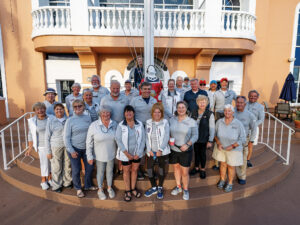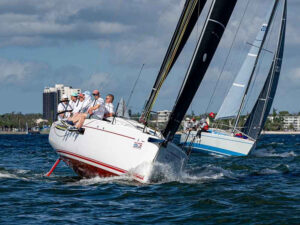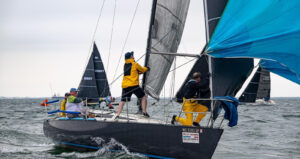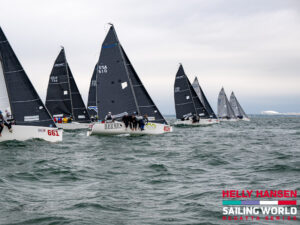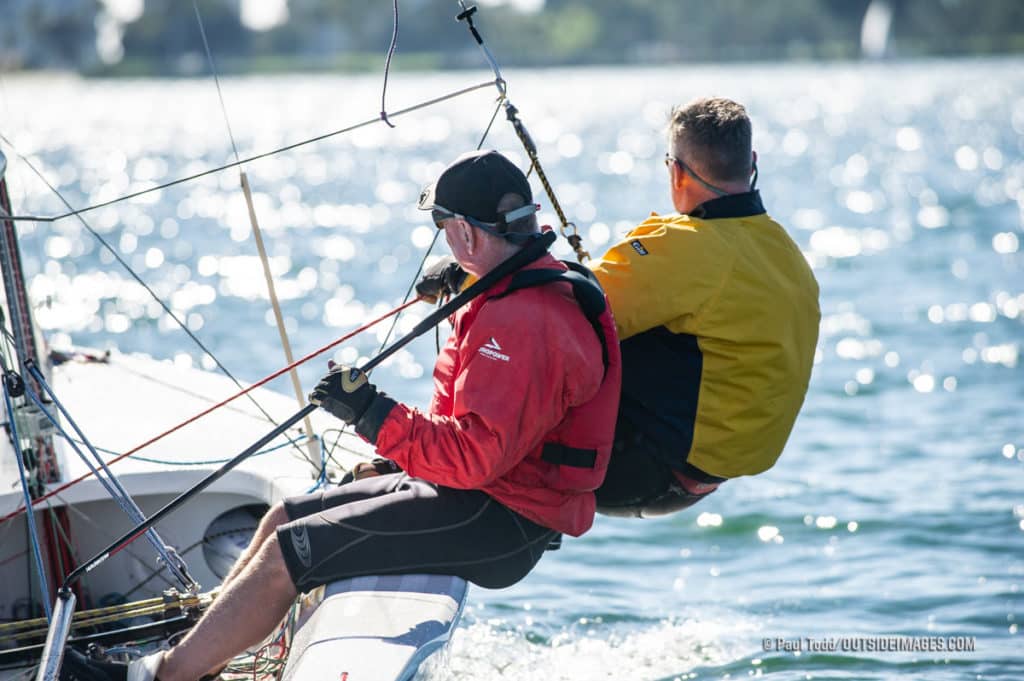
New to the Helly Hansen Sailing World Regatta Series’ South Bay circle in San Diego is the Flying Dutchman fleet, and while small in numbers, with only six registered teams, most of these skippers and crews are coming from afar to connect with and compete against each other for the first time in many years, to admire each other’s unique crafts and to trade tips in tricks about how to race the 20-foot classic speedsters.
As the first-ever trapeze boat selected for Olympic competition, the earliest Flying Dutchman hulls were built in the 1950s. The FD debuted in the 1960 Olympics and remained the two-person heavyweight dinghy until the 1992 Barcelona Games, where Americans Paul Foerster and Stephen Bourdow won their silver medals. Considered one of the fastest and most technical doublehanded dinghies of its time, the Flying Dutchman’s generous sail plan and lightweight planning hull, as well as its complex sail-control and purchase systems, demand experience and quick thinking, all of which will be in high demand on one of the regatta’s two confined and busy South Bay courses. The FDs will share their space with Formula 18 catamarans and International 14s, racing as individual classes.
It’s been many years since the area has hosted such a fleet of Flying Dutchman, and local devotee Doug Dommermuth, who sails out of nearby Mission Bay, says he’s looking forward to getting wet on South Bay again. “We love sailing there,” he says. “The winds are consistent and with the short chop it’s a beautiful area to sail a Flying Dutchman.”
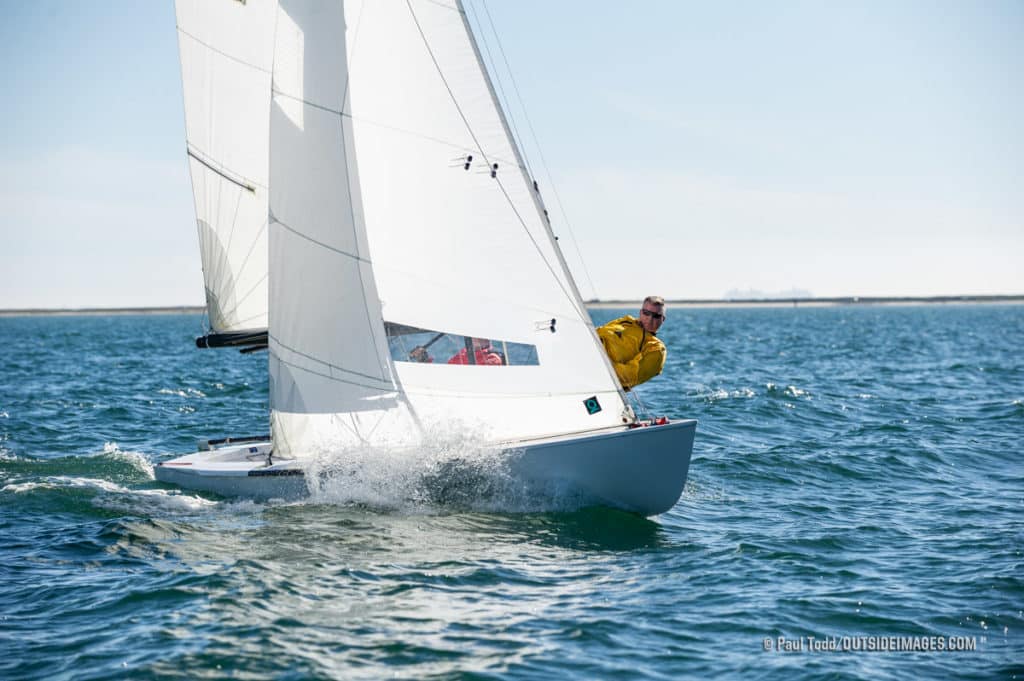
Dommermuth has been sailing FDs for 35 years and he has witnessed firsthand the many developments and improvements to the boat. As a naval architect and engineer, the FD is right up his alley. “While the FD’s hull shape is mostly unchanged after 70 years,” he says, “no one boat is remotely alike when it comes to sail control systems.”
There will be a variety of FDs on display in Coronado, he says, both old and new. The latest and hottest all-carbon boats are being trailered in from Michigan by brothers Razvan and Ovidiu Adam and from Inverness, California by Mike Meszaros and crew Gerhard Panuschka. These all-carbon beauties were by master craftsman Duane Ehleringer at Pacific Flying Dutchman in Oregon.
“The boat is beautiful and very stiff,” says Dommermuth. “Within the class rules there is some flexibility—enough so that making changes to it at the highest level can accrue some benefits.”
For example, he notes, top sailors have recently bumped out the transom to make it wider, so it seems to plane earlier in lighter winds. “There is, however, not a lot of room to play with in terms of hull measurements, it’s just that we’re still finding ways to make small changes that make the boat easier and better to sail.”

